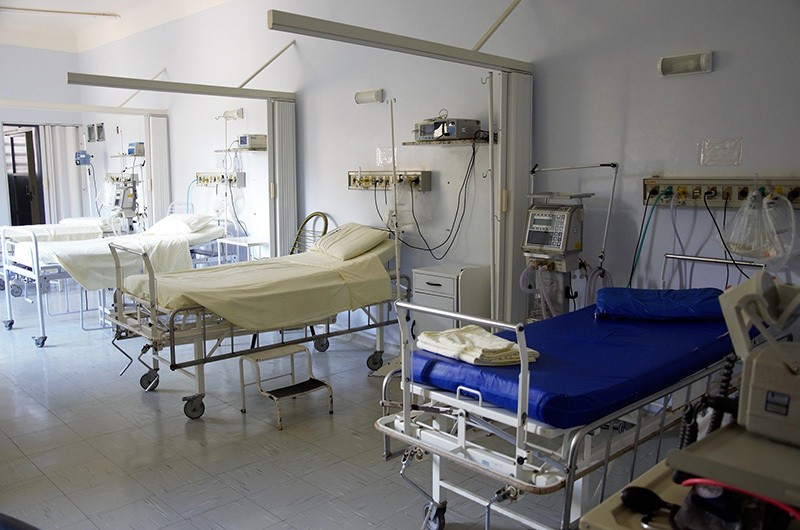Category Archives for Healthcare Quality

Role-Appropriate Participation for Everyone in the Clinical Realm
How enabled is your team? Does it matter? The answer to the second question is “Yes”. But how do you enable employees at all levels of a healthcare organization to make a positive impact on the quality-safety of patients and participate in performance improvement in meaningful ways? Prista’s ActionCue Clinical Intelligence application was designed so that all users are able to efficiently and intuitively engage with the platform and process to both provide and interpret data in meaningful ways.
Most healthcare IT applications have user administration based on profiles, roles and permissions, and many also associate the user’s roles with specific parts of the organization. These roles should be straightforward and easy to administer, in order to eliminate the frequently seen dependence on billable services from a vendor or additional analysts and specialists within the organization. This means users see only the things relevant to, and used by, themselves and mostly only at the time those functions are likely to be of interest. This makes it much easier to get to and act on exactly what they need, simplifies or shortens everyone’s learning curve, and significantly helps users stay focused on what they engaged with the application to do.
Probably no one benefits from this aspect more than the CEO and other C-level executives. Because of the typical complexity and numerous moving parts of the quality-safety efforts as described above, those at the top of the organization with enterprise-wide responsibilities very often have to choose between detaching themselves from the workings of quality-safety improvement or drowning in the details, because information is too often not collected or presented in a way that lends itself to a reasonable manner and degree of executive oversight. A common compromise is to add data analysts who work on a constant stream of ad hoc research and reporting requests. Not only is that “solution” expensive, but it also adds cycle time and disrupts the evolving pursuit from one answer to the next question as the skilled executive chases insights in a complex, dynamic environment.
An efficient platform must apply technology advances to directly facilitate the enablement and engagement of all users—even busy executives—with the insights and work being accomplished by the entire staff within the platform. ActionCue CI’s performance dashboard presents that big picture, with easy-to-follow links to additional presentations of related data, information and insight. Data hierarchies are designed to match the cognitive pathways of a healthcare leader, providing easily accessible, real-time insight. Whether it is the insights sought, the contribution of content, the user skill level or the cognitive pathway the user undertakes, a successful platform adapts to the user to deliver a productive and enjoyable experience. Implementing technology to facilitate both productivity and performance improvement is one of the most meaningful ways to enable your organization’s team.
This post is part 4 of our 7 Innovation series. Interested in reading more? Download the 7 Innovations that Deliver Strategic Value in Healthcare White Paper

The Value of Actionable Insight in Healthcare Organizations
Have you ever found yourself staring at row after row and column after column of data and asking yourself “What does this MEAN?”? One of the most valuable skills in today’s workforce is an ability to take all of the data that technology allows us to collect and to make sense of it in meaningful and actionable ways. We believe that all aspects of a quality-safety and performance improvement platform should boil down to this. Prista’s ActionCue Clinical Intelligence application consolidates your data and includes built-in reporting tools to provide instant insight into the most impactful issues that need to be addressed. That’s why we call it the Fast Path to Insight.
At Prista, our mission is to help healthcare leaders achieve optimal clinical and operational performance in the most effective, efficient and sustainable means possible. By addressing a wide variety of entrenched inefficiencies, particularly through the diligent application of technology, human behavior and design principles, our ActionCue Clinical Intelligence application helps those leaders find and prioritize their clinical- and financial-related issues, focus on corrective and preventive actions, and build and sustain an improvement in quality-safety culture.
Instead of delivering dead data in the form of reports, the ActionCue application facilitates action in the management of the improvement process by enhancing communication, focus, learning and accountability. The integration of data into useful insight enables staff at all levels of healthcare organizations to focus on quality and safety improvement and creates enormous positive financial impact. Reductions in fall with injury, hospital acquired infections, re-admissions and many other measurable and actionable issues not only avoid punitive revenue reductions in the Pay for Performance model, but these quality of care and patient experience measures are also meaningful messages to drive engagement and goodwill within the communities served by healthcare organizations.
By creating intuitive and user-friendly experiences, through simplifying on-going and required reporting initiatives, ActionCue CI improves results across multiple goal sets, and delivers real-dollar ROI. By managing clinical performance through meaningful dialogue and easily-tracked performance improvement plans, healthcare leaders can become less reactive and more proactive and step up their leadership in an environment in which it is direly needed.
This post is part 3 of our 7 Innovation series. Interested in reading more? Download the 7 Innovations that Deliver Strategic Value in Healthcare White Paper

Beyond Reporting to Collaborative Management Facilitation
Have healthcare IT tools successfully improved the ability of organizations to provide exceptional patient care?
Our application designers, with expertise in technology, learning psychology and perceptive science, have listened intently to hundreds of healthcare leaders describe their experiences with numerous healthcare IT products. This research led us to identify several common weaknesses in the design of many such products and understand them in the perspective of the evolution of systems design over the past several decades.
Several challenges contribute to the commonly lamented fundamental issue of “too many moving parts”. Some key components that contribute to negative productivity are:
- Applications that are little more than databases, with forms for entry and reports, which only select and re-arrange the data, exactly as it was entered, without any real processing, transformation or added value.
- Applications that inappropriately mimic the steps in processes devised in a non-digital “paper” environment and artifacts (forms, diagrams, voluminous reports, and documents) that perpetuate the paper process’ characteristics. Such deliberate stagnation drains resources and impedes innovation.
- Applications that, in total, produce a deliverable that is only an intermediate step toward a real goal – of questionable necessity in terms of the goal – creating a call for attention and a false sense of accomplishment.
- Applications that fail to do the very things for which technology should be applied—to drastically reduce repetition, manage the vastness of raw data/information, leverage human decisions, help focus attention on important things, appropriately divide responsibilities between machine and human, and enable an increase in productivity.
These inefficiencies hinder an organization’s ability to achieve its goals, fulfill its mission and purpose, and work effectively and efficiently. One of the most impactful ways to address these issues is to enable active and appropriately-informed C-suite participation.
By focusing on and uniting the three essential questions of executive oversight—where are we, how did we get here, and what is being done to improve—such a platform can be the hub of management communication. All the meaningful information for both frontline staff and management is seen and acted upon in unison and is easy to access and understand so analysts and assistants do not have to intermediate. This delivers the spirit of Hoshin Kanri, in a facilitated workflow that ensures the strategic goals of a company are communicated through the organization to drive progress and action at every level within the organization, without dependence on complicated and time-consuming diagrams and other artifacts.
Instead of just delivering dead data in the form of reports, the ActionCue application facilitates action in the management of the improvement process by enhancing communication, focus, learning and accountability. Prista’s ActionCue Clinical Intelligence platform was specifically designed to enable a “Fast Path to Insight” – which creates intuitive communication tools throughout the organization and allows real-time collaboration to drive performance improvement. It goes beyond mere quality-safety reporting and empowers users at all levels of the organization to engage with an IT tool that optimizes both data collection and analysis.
This post is part 2 of our 7 Innovation series. Interested in reading more? Download the 7 Innovations that Deliver Strategic Value in Healthcare White Paper

Improving Healthcare in Rural Communities
Rural communities in the United States are facing dangerous changes in the healthcare available to them. The financial realities for full-service hospitals with a relatively small number of beds in small communities mean that enormous trade-offs will be made, just to ensure that the hospital in some form can survive.
According to the InDepth article “Rural Hospitals Look for Help To Survive” by Alex Kacik in Modern Healthcare, “The gulf between rural hospitals’ available beds and daily admissions widens every year, causing providers to scale down. Without help from the government or larger health systems, many more will likely close.”
As with organizations of all kinds – when facing financial pressures, ongoing lack of profitability and an inability to attract and retain talent, the search for solutions becomes all-important. Some rural hospitals are forming cooperative purchasing groups, hospital management organizations are finding ways to consolidate and prioritize the services offered, or reducing the number of hospital beds available.
The article continues, “Inevitably, rural communities will have to shutter hospital wings or otherwise pare down, said Lyndean Brick, president of the consultancy Advis Group.”
Yet, with all of these ongoing financial pressures, rural hospitals are still an incredibly critical part of the community ecosystem without which, it is possible that the loss of life and lack of access to healthcare would significantly degrade the quality of life for our small, rural communities.
“These independent hospitals need to find some way to gain scale and leverage to offset margin compression and achieve parity with everyone else who is consolidating around them,” Brenner said.
At the same time rural hospitals work on scaling their patient flow, increasing the effectiveness and efficiency of key process is a critical factor in improving both top-line and bottom-line finances. Technology can certainly play a role in positively impacting rural healthcare organizations in a way that enables them to provide quality care in a cost-effective way. For instance, telemedicine services may create opportunities for specialist consultations without long-distance travel.
As rural healthcare providers take on the challenge of diving more deeply into identifying and addressing the specific needs of their communities, an ability to derive real-time insight into the performance, and facilitate improvement of their organization, will be invaluable. The point to be communicated here is that all hospital have been addressing quality and safety reporting for decades, but now the critical imperatives are to (1) extend the goal from generation and delivery of reports to achieving real clinical performance improvement, and (2) address that goal far more efficiently than has been done in the past. Quality-safety applications like Prista’s ActionCue Clinical Intelligence enable insight and implementation of performance improvement plans that both impact reimbursement and increase care quality.
But let’s be clear. It is not simply the application of some technology that brings about more effectiveness and efficiency, but how that information technology is designed and the goals driving that design. Any software that merely captures basic information about safety events, requiring humans to then organize a PI action plan, go back to the setting of an event to ask questions, gather and process data into a usable and informative format and do numerous other manual and ad hoc administrative functions is not at all improving the efficiency of the overall process. Not until fundamental innovation in IT and process are undertaken, those tools that are simply “reporting” oriented are replaced by a functional platform that truly facilitates the performance improvement process, and saves its users significant time in that pursuit, will progress be made toward the triple aim. That is the only way clinical performance has can be optimized for better operational, regulatory and financial outcomes.

Reducing Preventable Errors Requires a Sustained Shift in Processes and Culture
Preventable medical errors are a serious issue in healthcare and are estimated to be the third leading cause of death in the US, behind cancer and heart disease. The issue has garnered more attention within recent years, and for good reason, as according to a Mayo Clinic study, 8.9% of surgeons reported they believe t have made a major medical error within the last three months. There are many causes for medical errors, including communication problems, organizational transfer of knowledge, staffing patterns/workflow, and more.
Hospital administrators have seen a certain level of improvement in the number of medical errors by taking action based upon the findings and recommendations of several private- and public-sector organizations aimed at increasing communication, information sharing and teamwork among providers. While these methods can be effective, healthcare leaders must take their efforts a step further to create impactful change. Perhaps first and foremost, healthcare executives must drive efficiency and a value proposition into the consideration of changes. Sadly, many of those recommendations coming from traditional experts and thought leaders in healthcare amount to a hospital’s staff doing more supportive and administrative work for the sake of improving the quality and safety of patient care. This cannot be a good way to lower costs and improve patient care on a sustainable basis.
Sustained improvement in quality of care requires a significant shift in culture, facilitated by the optimization of work processes for clinical staff, increased involvement and leadership by executives, and an unrelenting focus on patient safety and quality. A subtle, but very important, aspect of this shift in approach is to orient the changes and innovations around the goal, rather than the historical activities and artifacts used in previous decades in managing and improving quality-safety. While applying information technology can be a major contributor to optimizing these processes, success – including the streamlining, reduction or even elimination of some steps and artifacts – requires that the IT be very well designed around the capabilities of the technology, the human/user factors and a keen knowledge of the work environment and goals.
Achieving quality goals requires a commitment to creating a “Culture of Quality,” in which senior healthcare executives both lead and participate. It requires open, transparent and bi-directional communication at all levels, but in order to get true “buy in” from clinical staff, the processes and procedures that make up their day-to-day must be efficient, intuitive and sensible. Quality improvement must be woven into every facet of their daily actions, with a continuous reminder of shared goals, as well as updates on progress. Placing the improvement process itself at the center of the overall quality-safety effort leads to reverse engineering and optimizing the pathway to the goals of better patient care, lower costs and a sustainable culture around both.
We kept these guiding principles in mind when developing the ActionCue Clinical Intelligence quality and performance improvement platform. We designed the application to save time among users, by ensuring their day-to-day functions are not only easy to use and understand, but also intuitively match their natural tasks. Furthermore, the system works to effectively shape their behavior through the encouragement of effective quality improvement methodologies. When clinical staff are presented with quality improvement technology that is efficient and helpful, they are more likely to remain committed to improving quality of care.
Effective leadership is essential in creating a sustained culture shift. Executives must remain committed to improving patient safety through involvement in staff’s daily functions, and monitoring of clinical issues and what’s being done to resolve them. ActionCue’s reporting feature allows staff to prepare reports in minutes, making it easy to provide executives with insight into quality improvement progress. This not only saves time, it allows upper management to remain an active participant and leader in the achievement of quality improvement goals.
Reducing medical errors requires a commitment from both clinical staff and hospital management to a “Culture of Quality.” ActionCue CI can help hospitals achieve this sustained culture shift through one easy-to-use online platform. If you’d like to learn more about how ActionCue is using innovation to improve patient care, download our recent white paper.
